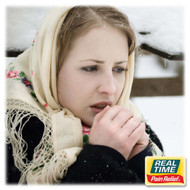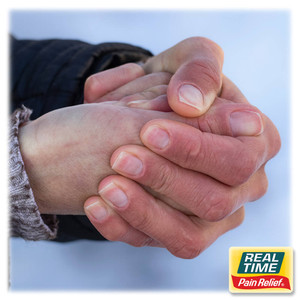Arthritis Aggravated by Cold Weather: Understanding, Managing, and Alleviating Pain
1st Dec 2023
Introduction
For individuals living with arthritis, the arrival of cold weather can bring a unique set of challenges. The drop in temperature is often accompanied by increased stiffness, swelling, and pain in the joints, making the winter months particularly difficult for those with arthritis. In this article, we will explore how cold weather affects arthritis, provide tips for managing pain during colder months, stress the importance of keeping joints warm and maintaining flexibility, and recommend over-the-counter pain relief creams and ointments suitable for arthritis.
How Cold Weather Affects Arthritis
The impact of cold weather on arthritis is multifaceted. The cold can cause the synovial fluid within joints to thicken, leading to increased friction and discomfort. Additionally, changes in barometric pressure can contribute to joint pain, as these shifts may affect the expansion and contraction of joint tissues. Cold weather can also prompt muscles to contract, putting additional stress on arthritic joints.
For individuals with rheumatoid arthritis, an autoimmune disorder, the cold can potentially exacerbate the inflammatory response, intensifying joint pain and swelling. Osteoarthritis, a degenerative joint disease, can also be aggravated by the cold due to increased stiffness and reduced lubrication within the joints.
Tips for Managing Arthritis Pain During Colder Months
Layering and Insulation:
- Dressing warmly is essential for managing arthritis pain in cold weather. Layering clothing helps trap body heat, keeping joints and muscles insulated. Wearing thermal socks and gloves, and using heat-retaining materials can provide additional protection against the cold.
Maintaining Physical Activity:
- Regular exercise is crucial for managing arthritis, even in the winter. Indoor activities such as swimming, water aerobics, or low-impact exercises can help keep joints flexible without exposing them to the harsh cold.
Warm-Up Exercises:
- Prior to engaging in any physical activity, it's essential to warm up properly. Gentle stretches and range-of-motion exercises can help increase blood flow to the joints, reducing stiffness and improving flexibility.
Hydration:
- Staying hydrated is important for joint health. Cold weather can lead to decreased water intake, so it's crucial to be mindful of hydration levels to support overall joint function.
Importance of Keeping Joints Warm and Maintaining Flexibility
Keeping joints warm is a key aspect of managing arthritis during colder months. Heat therapy, such as warm baths, heating pads, or hot packs, can help alleviate stiffness and promote blood flow to the affected areas. Wearing thermal or heated clothing, like heated gloves or knee wraps, can also provide continuous warmth to arthritic joints.
Maintaining flexibility is equally important. Regular stretching exercises, particularly those focused on the affected joints, can prevent stiffness and improve range of motion. Incorporating gentle yoga or tai chi into a daily routine can be particularly beneficial for enhancing flexibility and balance.
Recommendations for Pain Relief Creams and Ointments
Over-the-counter pain relief creams and ointments can offer targeted relief for arthritis symptoms. Products containing menthol may help to temporarily reduce minor pain associated with arthritis. Arnica Montana is a homeopathic ingredient that can help to reduce pain and stiffness. Other beneficial ingredients to find on the label are peppermint oil, capsaicin, willow bark, and industrial hemp oil. These ingredients can work together to provide a spectrum of relief options, allowing individuals to choose what suits them best.
When choosing a pain relief cream or ointment, it's essential to carefully review the ingredient list and, if possible, consult with a healthcare professional. Keep in mind that individual responses to these ingredients can vary, so it may be beneficial to try different options to find what works best for your specific arthritis symptoms.
Resources/References:
- Arthritis Foundation - "Cold Weather Pain Management Tips" - https://www.arthritis.org/
- Johns Hopkins Arthritis Center - "How Weather Affects Arthritis" - https://www.hopkinsarthritis.org/
- National Institute of Arthritis and Musculoskeletal and Skin Diseases (NIAMS) - https://www.niams.nih.gov/
- Healthline - "The Potential Benefits of Hemp Oil for Arthritis" - https://www.healthline.com/
- American Academy of Dermatology Association - "Capsaicin for Pain" - https://www.aad.org/





